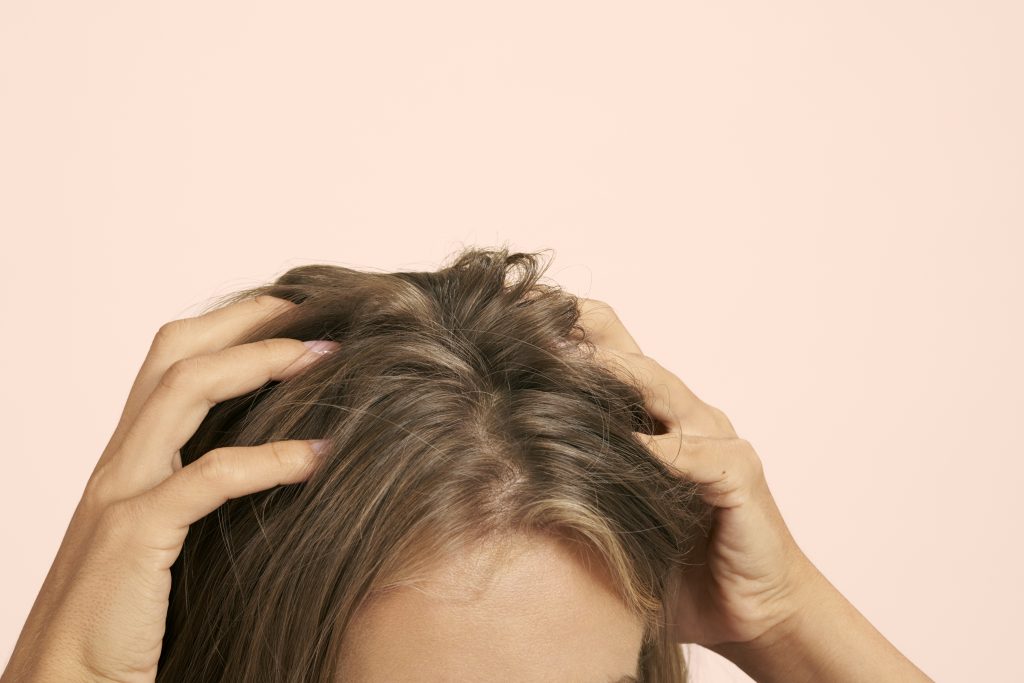What Causes Static Hair?
“Static is caused when your hair rubs against a dissimilar material and electrical charges are generated,” explains Gina Rivera, celebrity stylist and founder of Phenix Salon Suites. “For example, think about when you pull a sweater over your head and your hair is standing on end after you put your head through the neck hole. However, dryness can also play a major role in hair static. If the hair gets dry enough, static can be created by the individual locks of hair rubbing against one another.”
Why Are We More Prone to Static Hair in Winter?
Blame the cold weather. The heat indoors is another culprit, which triggers increased dryness. “Because you sleep under a heater and work or live with the heater on, the constant exposure to heat breaks down the hair cuticle,” says Holly Dear, hair artist and owner of House of Dear Salon in Dallas, Texas. “It’s also caused by exposure to wind and drier weather. The pH balance is off due to dehydration and the breaking down of the cuticle.”
Thanks to a lack of moisture, Rivera adds that it’s easy for more friction to be created between the individual hair strands and any other items the hair comes in contact with, such as hats, sweaters, and scarves. It’s no wonder that caring for your hair in the winter is a challenge all of its own.
How to Get Rid of Static Hair: The Expert View
1. Use a Hydrating Shampoo
“It’s really important to ensure you’re infusing hair with additional moisture to reduce static,” Rivera says. “Healthier hair results in reduced dryness and breakage.” By keeping your hair hydrated, it’s much easier to fight static, frizz, and other winter hair woes. Using the right shampoo will help your hair and scalp maintain its natural oils and keep everything in balance.
2. Never Skip Conditioner
Conditioner is crucial to keeping hair hydrated, strong, and protected. “The most common mistake people make when it comes to hair static is failing to be on a good moisturizing routine that includes professional conditioners and deep conditioners,” Rivera says. This product category is all about sealing the hair cuticle and making strands more manageable, which is key to preventing static hair in winter. To take it up a notch, add a hair mask to your routine. “A weekly deep conditioning treatment is also an important part of the hair regimen for those that are stamping out static,” Rivera says.
3. Apply a Leave-In Hair Product
“There are some wonderful serums and leave-in conditioners on the market that can help to reduce static by contributing moisture to the hair,” Rivera says. “Styling creams, like a curl cream, are also terrific for reducing static and they work well with a variety of styles.”
4. Steer Clear of Drying Ingredients
“Be sure to avoid products that add to the dehydration of the hair, like high levels of alcohol,” Dear advises. “Proper products are important for hair health and address the issues as they occur.” Alcohol is often found in gels, styling foams, and aerosol dry shampoos, so always check the ingredient label first.
5. Don’t Wash Your Hair Too Frequently
Every time you suds up your strands, you remove the natural oils from your hair. “Review your hair cleansing schedule to ensure you are not causing your hair to be even drier by over washing,” Rivera says. Unless you have very fine hair, you don’t need to wash your hair daily. Shampooing every other day is frequent enough to keep hair clean and help to prevent static hair in winter.
6. Use the Right Brush
“Natural bristle brushes are best to use in hair that is prone to static,” Dear says. “This helps create natural oil from the scalp and doesn’t hold the electric charge that when rubbed against the hair can create static.”
Certain brushes are especially good at preventing hair breakage. Rivera adds that boar bristle brushes are known for fighting off dryness. “They are great for stimulating the scalp as well,” she says. “As I always say, a healthy scalp means healthy hair.”
7. Opt for Anti-Frizz Products
Frizz and static have something in common: They both happen to dry hair, which is why certain anti-frizz potions may tame both. “They can help if they have a property that helps to hold in moisture,” Dear explains.
8. Choose Your Tools Wisely
“I highly recommend using styling tools that are designed using infrared technology, which locks the moisture into the hair,” Rivera says.
9. Start Fighting Static Hair Immediately
Procrastination isn’t your friend here. “Not addressing the issue when it starts is one of the most common mistakes,” Dear says. “This can prolong the lives of dehydration and the fight to get pH balanced becomes a more difficult task.”
Take Care of Static-Prone Hair
Fixing static hair in winter is not an impossible task. There are a ton of professional-approved methods for fighting off flyaways including keeping hair as hydrated as possible. If your hair and scalp are properly moisturized and balanced, static shouldn’t be an issue for you.
Now that you’ve learned how to deal with static hair, it’s time to take action. Take the Prose consultation to get hair and scalp products customized to your needs. Choose from our custom hair oils, shampoos, conditioners, and styling gels.





